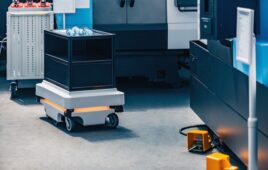Office buildings have an enormous carbon footprint, but often energy is being wasted maintaining empty rooms and spaces at a comfortable temperature. Research to be published in the International Journal of Communication Networks and Distributed Systems shows how the ubiquity of smart phones connected to the office network could be used to monitor occupancy and reduce heating or air conditioning for unused spaces.
Bruce Nordman of the Lawrence Berkeley National Laboratory, plus Ken Christensen of the Department of Computer Science and Engineering at the University of South Florida, and other colleagues from those institutions and the University of Puerto Rico at Arecibo, explain how implicit occupancy sensing can be undertaken using existing IT infrastructure. The infrastructure includes networked smart phones, devices on the local IP network like computers, and others – and avoids installing dedicated sensors in every space in a building. Their approach is to continually monitor the network addresses associated with every device, or data flowing to or from the devices.
The implicit sensing approach uses the network identity and other data and how devices are accessing specific wireless access points and other network equipment in the building and then correlates them with the assumed location of the users of those devices when mapped against the building’s floor plans, or location of the access points. Unoccupied and frequently unused spaces can then have their temperature control and air-conditioning adjusted to lower power consumption, at least until the space is once again occupied. Controls could be put in place to allow temperature of a given space to be adjusted in advance for schedule occupancy.
The team describes three main advantages of their approach over dedicated monitoring equipment. First, there is no additional hardware cost in terms of devices, installation, operation, or maintenance. Secondly, sensor readings can be obtained readily over an existing network. Finally, the system can drill down to occupancy number, identity and activity, information that would not be available for dedicated sensors. Such information can be coupled to management systems or can simply be used to ensure that cleaning staff are not blasted with heat while working nor office workers chilled too drastically in a meeting room.
Filed Under: Industrial automation




